On Sunday night O Eco and Internews launched InfoAmazonia, a journalism network reporting on the Amazon. InfoAmazonia brings important news and environmental maps from the struggling Amazon Rainforest on issues ranging from deforestation to extractive industries to indigenous issues. Using open data to embed stories in contextual maps, InfoAmazonia aims to contribute to the debate for more sustainable development in a region of global importance.
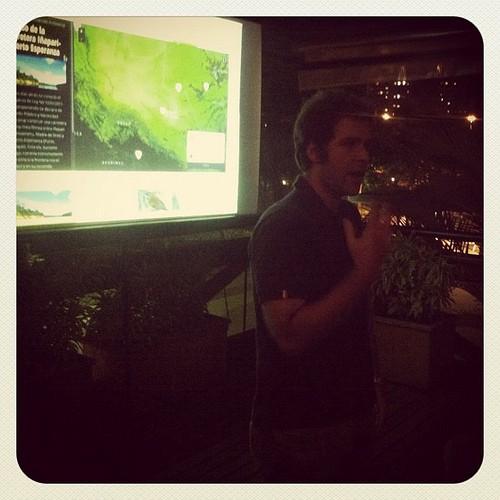
*Gustavo Faleiros, Knight International Journalism Fellow of the International Center for Journalists and initiator of InfoAmazonia, presenting the site*
The launch comes three days before the official start of the United Nation’s Conference for Sustainable Development Rio+20, where environmental challenges rank top on the agenda. InfoAmazonia was made possible by the Knight International and the Climate and Development Knowledge Network. We partnered with O Eco and Internews to provide site strategy, build, and cartography, as well as to provide trainings on how to use the site’s tools for local journalists.
News, contextualized
The site presents the latest news articles on a map above the fold. News can be browsed in Portuguese, Spanish, and English, reflecting the fact that the Amazon spreads across nine South American countries and is of global interest. The map presents all articles on InfoAmazonia, and selecting a story opens it in the sidebar. The map offers three layers to add critical context to the story, with high resolution geographic data on cities, roads, infrastructure, deforestation, forest fires, oil wells, and mining concessions. Right above the map, news can be filtered by the main contributor sources involved in InfoAmazonia and by news submitted by readers. Right under the map, articles can be browsed in reverse chronological order. All articles, including the map, can be embedded just like a Youtube video.
Here’s a look at the frontpage with news featured above the fold, showing the top news story situated on the map.
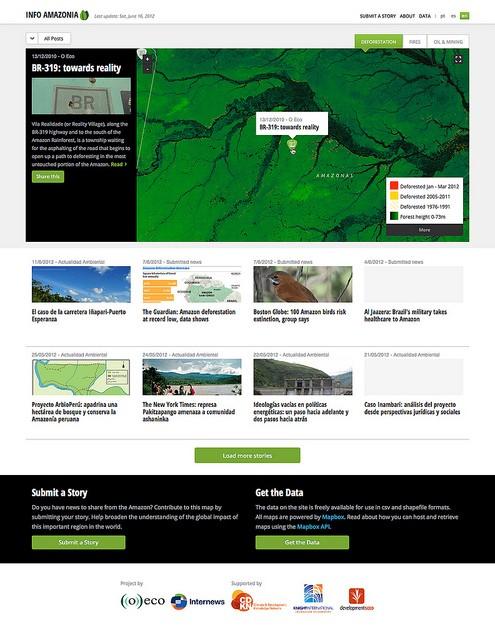
A look at deforestation showing forest height (green), long term (yellow hatches) and recent deforestation (yellow areas), and major infrastructure locations playing a role in driving forest destruction.
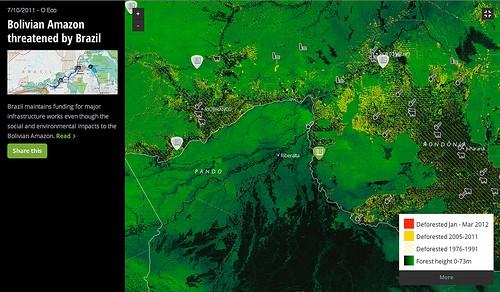
Expanded legends explain each element on the map in detail and list sources.
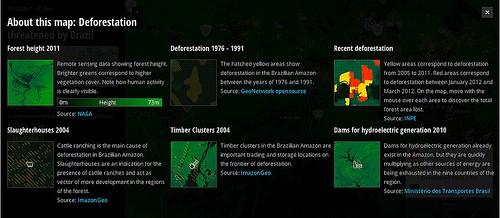
This map of fires reveals how fires generally occur in areas with the highest rates of deforestation. The heat map indicates fire frequency, with red dots showing fire events in May and the yellow dots showing major fires in the past 12 years.
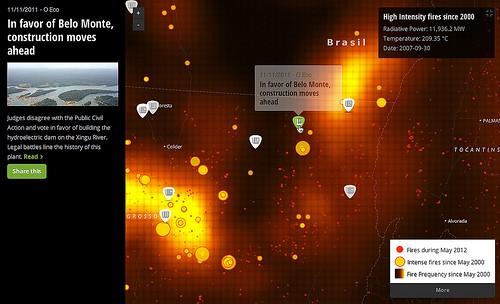
Oil wells and extraction of minerals represent environmental risks in themselves and open the forest to further exploration. Mining concessions are currently conflicting with protected areas, as you can see in this map. The bright green areas are protected areas, the teal blue squares are concessions for mining research, and darker blue areas are exploration and actual extraction concessions.
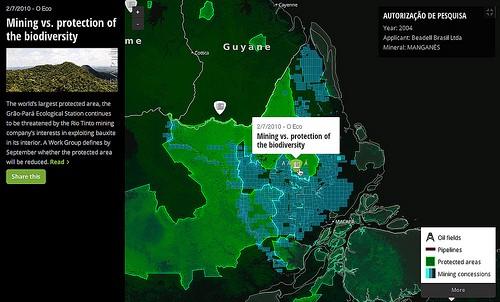
Anybody can submit
InfoAmazonia calls on its readers and citizen journalists to submit links to related original stories. We use a simple Google form that drops submissions into a spreadsheet, where InfoAmazonia editors review submissions and push them live.
Use the data
A goal of InfoAmazonia is to propagate the use of data to discover and contextualize news stories. Particularly with Brazil opening its data troves, a wealth of data has become available that journalists can fully tap into. InfoAmazonia’s maps use data from Instituto Brasileiro de Geografia e Estatística (IBGE), NASA, Departamento Nacional de Produção Mineral (DNPM), Ministério da Ciência e Tecnologia Brasil, Ministério dos Transportes Brasil, ImazonGeo, and OpenStreetMap. All datasets are listed and linked from the site for convenient access to important datasets.
To help get journalists started working with geographic data, we hosted a training together with Internews, Knight International Center for Journalism and O Eco last weekend here in Rio de Janiero.
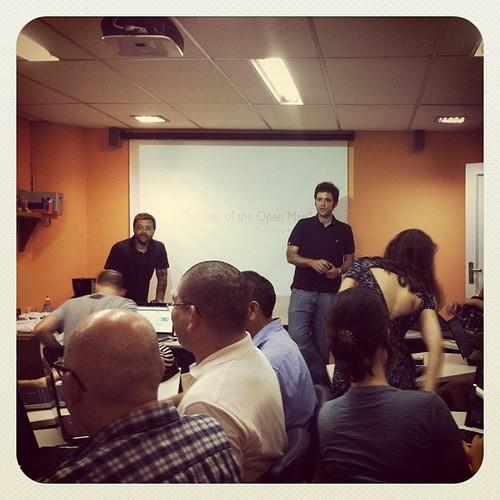
Journalist training on geo tools at iBase in Rio de Janeiro on Sunday.
Built with Jekyll and MapBox maps
While the site is highly interactive, we used the Jekyll site generator to avoid expensive dependencies on databases or dynamically server side generated pages. All content is managed in Google spreadsheets, converted to GeoJSON, and built client side. All maps are built with TileMill and hosted on MapBox hosting.
Visit InfoAmazonia on the web and follow its updates on Twitter.
What we're doing.
Latest
